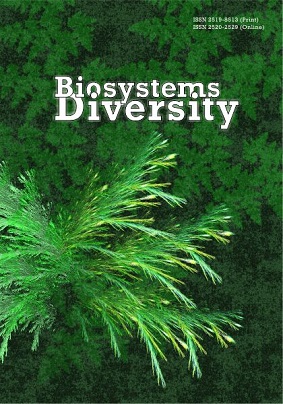Recreation and terrain effect on the spatial variation of the apparent soil electrical conductivity in an urban park
Recreation and terrain effect on the spatial variation of the apparent soil electrical conductivity in an urban park
Author(s): O. M. Kunakh, N. V. Yorkina, O. V. Zhukov, N. M. Turovtseva, Y. L. Bredikhina, T. A. Logvina-BykSubject(s): Agriculture, Energy and Environmental Studies, Environmental Geography, Human Ecology, Rural and urban sociology, Environmental interactions
Published by: Дніпропетровський національний університет імені Олеся Гончара
Keywords: recreation; soil electrical conductivity; variogram; Matern model: digital elevation model;
Summary/Abstract: Recreation is an important cultural ecosystem service and is able to significantly affect soil heterogeneity and vegetation functioning. This study investigated the role of the relief and tree stand density in the apparent soil electrical conductivity variation within an urban park. The most suitable variogram models were assessed to evaluate the autocorrelation of the regression models. The map of the spatial variability of apparent soil electrical conductivity was built on the basis of the most suitable variogram. The experimental polygon was located in the Botanical Garden of Oles Honchar Dnipro National University (Dnipro City, Ukraine). The experimental polygon was formed by a quasi-regular grid of measurement locations located about 30 m apart. The measurements of the apparent electrical conductivity of the soil in situ were made in May 2018 at 163 points. On average, the value of soil apparent electric conductivity within the investigated polygon was 0.55 dSm/m and varied within 0.17–1.10 dSm/m. Such environment predictors as tree stand density, relief altitude, topographic wetness index, and potential of relief to erosion were able to explain 48% of the observed variability of soil electrical conductivity. The relief altitude had the greatest influence on the variation of soil electrical conductivity, which was indicated with the highest values of beta regression coefficients. The most important trend of the electric conductivity variation was due to the influence of relief altitude and this dependence was nonlinear. The smallest values of the soil electrical conductivity were recorded in the highest and in lowest relief positions, and the largest values were detected in the relief slope. Recreational load can also be explained by the geomorphology predictors and tree stand density data. These predictors can explain 32% of the variation of recreational load. The variogram was built both for the soil apparent electrical conductivity dataset and for the residuals of the regression model. As a result of the procedure of the models’ selection on the basis of the AIC we obtained the best estimation of the variogram models parameters for the electrical conductivity and for the regression residuals of the electrical conductivity. The level of recreation was correlated statistically significantly with the apparent soil electrical conductivity. The residuals of regression models in which geomorphological indicators and tree stand density were used as predictors have a higher correlation level than the original variables. The soil electrical conductivity may be a sensitive indicator of the recreation load.
Journal: Biosystems Diversity
- Issue Year: 28/2020
- Issue No: 1
- Page Range: 3-8
- Page Count: 6
- Language: English

